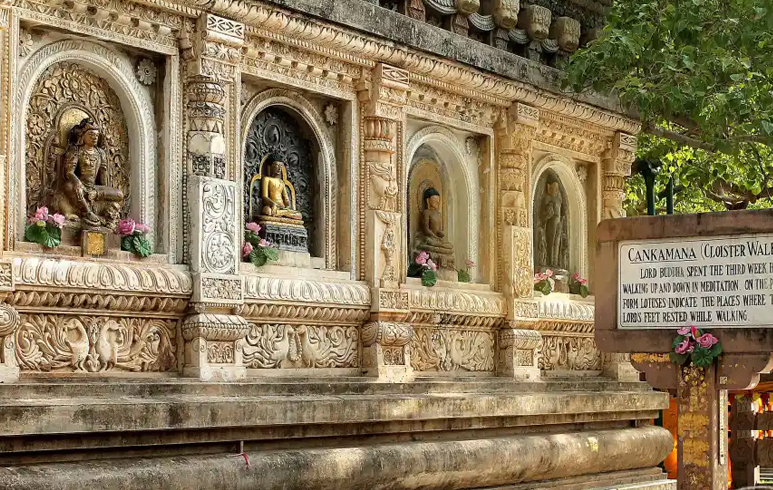About Bodhgaya Tour Information
Bodhgaya is small and quiet town, which is the most important of all the Buddhist sites in the world. The Maha Bodhi temple of Bodh Gaya is one of the important places of worship for the Buddhists. Apart from being a vital Buddhist centre, it is also a significant archaeological site. Devout Buddhists and tourists from all over the world visit Bodhgaya, to study Buddhism and the art of meditation, or to simply absorb the aura of solemn splendour that surrounds the place.
History:
Marking the holy spot of the enlightenment of the Master, this site is looked upon with greatest sanctity and became a flourishing Buddhist establishment with numerous temples, stupas and monasteries.
According to tradition a large number of shrines and memorials were erected at the site to commemorate the incidents before after enlightenment but only few now can be recognised. Of the earliest shrines, traditionally attributed to Asoka, only vajrasana or the sandstone throne with the characteristic Mauryan polish and decorative designs has survived and is seen beneath the holy Bodhi tree.
To the Sunga period belongs a portion of the sandstone railing carved with bas-reliefs, typical of the age. The remaining portion of the railing pertains to the Gupta period. The main brick-built shrine known as the Mahabodhi temple which appears to have been originally erected in circa 2nd century A.D., is encumbered with the heavy renovations, the four corner-towers being an arbitrary addition of circa 14th century. Its central tower, standing on a high plinth, is about 55m high and is a straight-edged pyramid of seven storeys, relieved by pilasters and chaitya-niches, substantially agreeing with its description left by the Chinese pilgrim Hiuen Tsang. The remaining shrines and stupas mostly belong to the Pala period (9th to 12th century).
PRIME SITES IN BODH GAYA
Bodhi Tree:

Towards the West of the Maha Bodhi temple, is the tree where Gautam Buddha did his meditation and attained enlightenment.
Bodhi Sarovar:

Before going in for meditation, Buddha took bath in this pond. This pond is situated towards the west of Bodhi temple. The pond is situated in a very attractive place and is worth visiting.
Chankamana:

Towards North of the Bodhi Temple, is a platform with foot impressions of Buddha. Apart from these ponds and platforms, there are many temples built by the people of various nations like the Tibet temple, the Japanese, the Thai, the Lankan and the Bhutan temple. These temples are also a major attraction for the tourists and devotees, who visit Bodh Gaya.
PRIME SITES IN BODH GAYA
Barabar Caves:

57 Kms from Gaya are some earliest carved out Buddhist caves. The interior of these caves is chiselled to a wonderful polish. The carvings in the caves reflect the skill with which these caves are carved out. These caves were built some where in the 3rd century and are fine examples of the skill, which the Indian mason had attained at that time. These caves are believed to be of Mauryan period and considered to be the origin of Indian cave architecture.
Deo :

20 kms from Gaya is located the Sun temple of Deo. In fact, this place is famous for the 'Chhat' festival, which is held in the month of October-November.
Dungeswari :

The place is famous for the caves where Buddha had meditated for some time. It was in these caves that he concluded that the ultimate knowledge can not be attained through mortification of the flesh. These caves are 12 kms from the main town of Bodh Gaya.
Rajgir:

Just 15 kms from Nalanda is located the complex of temples and monasteries. The place is called Rajgir. It is one of the most important tourist places in India. Being located in a valley, Rajgir is a very scenic place.
TRAVEL INFORMATION ON BODHGAYA
HOW TO GET THERE
Air: There is no Airport and hence no direct air connection.
Rail: The Railways Department has provided Gaya, the neighbouring city, with a number of trains which connect the city with all the parts of India. The Rajdhani and Kalka Mail have their stoppages here. Gaya is a junction and one can change trains for the other train routes.
Road: Bodh Gaya is on the Grand Trunk Road and thus, is well connected by road, with all the parts of the country.